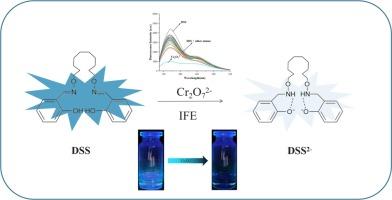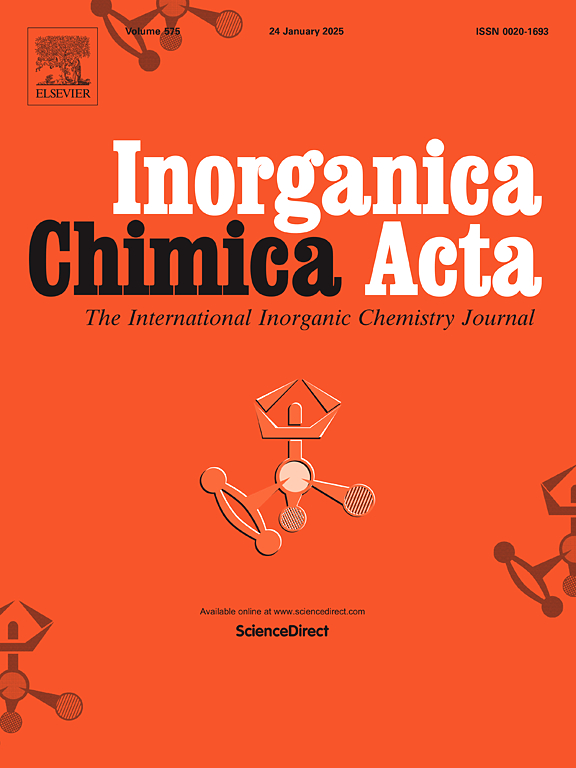A flexible ten carbon long-chain salamo-like fluorescent probe for highly efficient and selective recognition of Cr2O72− ions, mechanism and practical application
IF 2.7
3区 化学
Q2 CHEMISTRY, INORGANIC & NUCLEAR
引用次数: 0
Abstract
Based on salicylaldehyde unit, we designed and synthesized a novel fluorescent chemical probe DSS, which has a flexible long chain and contains ten methylene units. The experimental results showed that the fluorescent probe DSS can efficiently and selectively recognize Cr2O72− anions, having a detection limit LOD of 1.14 × 10−7 M. Additionally, the binding constant (Ka) of the probe was 3.75 × 104 M−1, the minimum quantification limit LOQ was as low as 3.82 × 10−7 M. We systematically studied the recognition mechanism of fluorescence chemical sensor DSS through fluorescence and UV visible spectroscopy. Significantly, the fluorescence of the chemosensor DSS can be remarkably quenched by Cr2O72− via the Internal Filtering Effect (IFE). Based on this phenomenon, a novel salamo-like fluorescence method for detection of Cr2O72− was established. The proposed fluorescent method was successfully applied to the detection of Cr2O72− in rainwater, tap water, and Yellow River water.

用于高效、选择性识别 Cr2O72- 离子的柔性十碳长链沙拉莫荧光探针、机理和实际应用
基于水杨醛单元,我们设计并合成了一种新型荧光化学探针 DSS,它具有柔性长链,包含 10 个亚甲基单元。实验结果表明,荧光探针 DSS 能高效、选择性地识别 Cr2O72- 阴离子,其检测限 LOD 为 1.14 × 10-7 M,结合常数 Ka 为 3.75 × 104 M-1,最低定量限 LOQ 低至 3.82 × 10-7 M。值得注意的是,化学传感器 DSS 的荧光可以通过内部过滤效应(IFE)被 Cr2O72- 明显淬灭。基于这一现象,我们建立了一种新型的类似于萨拉莫的荧光方法来检测 Cr2O72-。所提出的荧光方法被成功应用于雨水、自来水和黄河水中 Cr2O72- 的检测。
本文章由计算机程序翻译,如有差异,请以英文原文为准。
求助全文
约1分钟内获得全文
求助全文
来源期刊

Inorganica Chimica Acta
化学-无机化学与核化学
CiteScore
6.00
自引率
3.60%
发文量
440
审稿时长
35 days
期刊介绍:
Inorganica Chimica Acta is an established international forum for all aspects of advanced Inorganic Chemistry. Original papers of high scientific level and interest are published in the form of Articles and Reviews.
Topics covered include:
• chemistry of the main group elements and the d- and f-block metals, including the synthesis, characterization and reactivity of coordination, organometallic, biomimetic, supramolecular coordination compounds, including associated computational studies;
• synthesis, physico-chemical properties, applications of molecule-based nano-scaled clusters and nanomaterials designed using the principles of coordination chemistry, as well as coordination polymers (CPs), metal-organic frameworks (MOFs), metal-organic polyhedra (MPOs);
• reaction mechanisms and physico-chemical investigations computational studies of metalloenzymes and their models;
• applications of inorganic compounds, metallodrugs and molecule-based materials.
Papers composed primarily of structural reports will typically not be considered for publication.
 求助内容:
求助内容: 应助结果提醒方式:
应助结果提醒方式:


